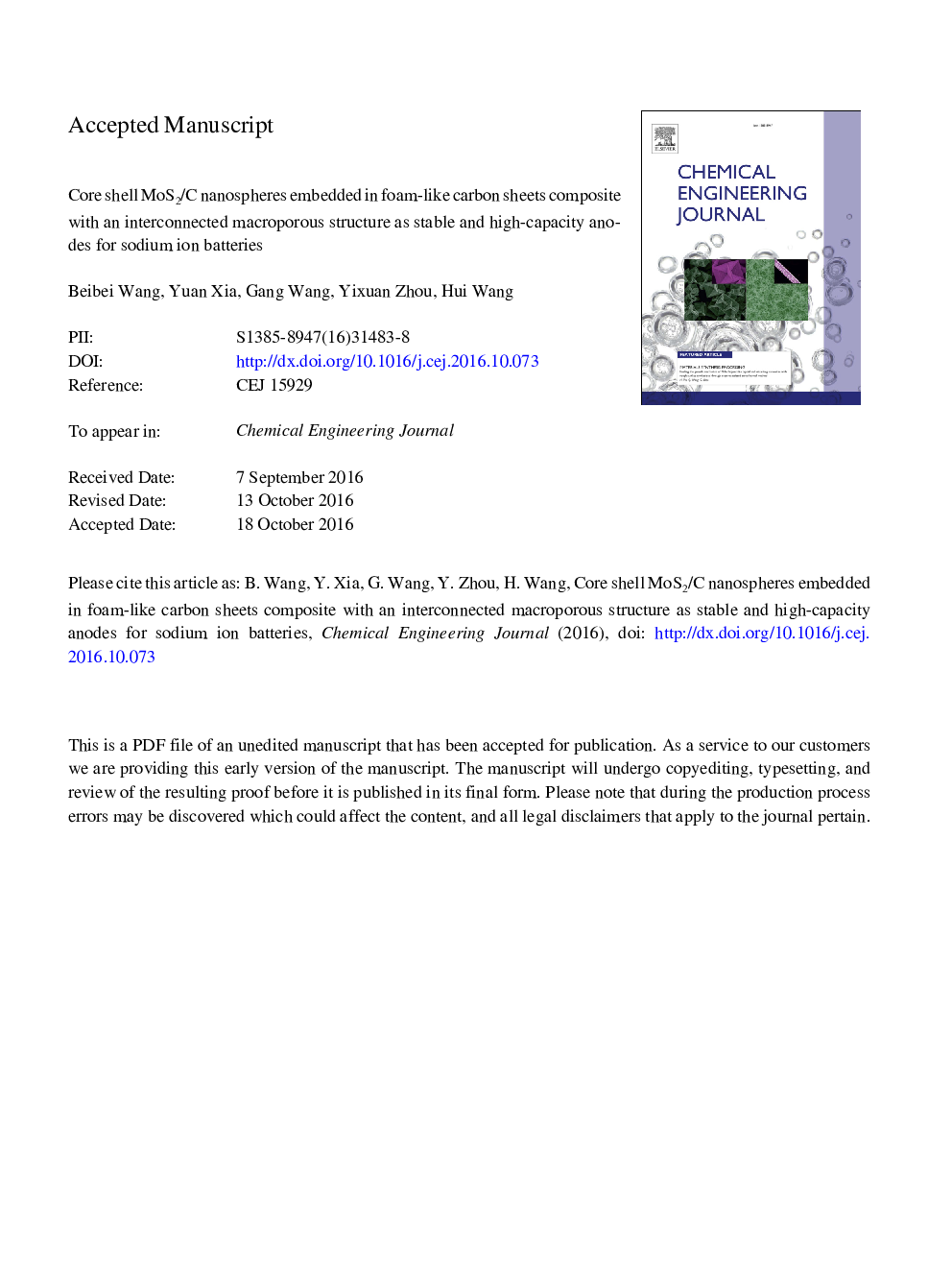| Article ID | Journal | Published Year | Pages | File Type |
|---|---|---|---|---|
| 4763663 | Chemical Engineering Journal | 2017 | 35 Pages |
Abstract
Core shell MoS2/C nanospheres embedded in foam-like interconnected macroporous carbon sheets composite were successfully fabricated by a facile glucose carbonization process. In this unique architecture, the interconnected void nanospheres produced by SiO2 nanopsheres homogeneously surround the core shell MoS2/C nanospheres. When evaluated an anode material for sodium-ion batteries, the as-synthesized porous carbon sheets supported core shell MoS2/C composite displays a discharge capacity of 523 mAh gâ1 after 100 discharge/charge cycles at the current density of 0.1 A gâ1. Moreover, the 300th discharge capacity at a higher current density of 1 A gâ1 is 337 mAh gâ1. The superior electrochemical performance of the porous carbon sheets supported core shell MoS2/C composite can be attributed to the supporting carbon sheets with an interconnected macroporous structure, uniform distribution of carbon coated MoS2 nanospheres in carbon matrix, high electronic conductivity, and thus leading to enhanced structural stability and cyclability of the anode material.
Related Topics
Physical Sciences and Engineering
Chemical Engineering
Chemical Engineering (General)
Authors
Beibei Wang, Yuan Xia, Gang Wang, Yixuan Zhou, Hui Wang,
